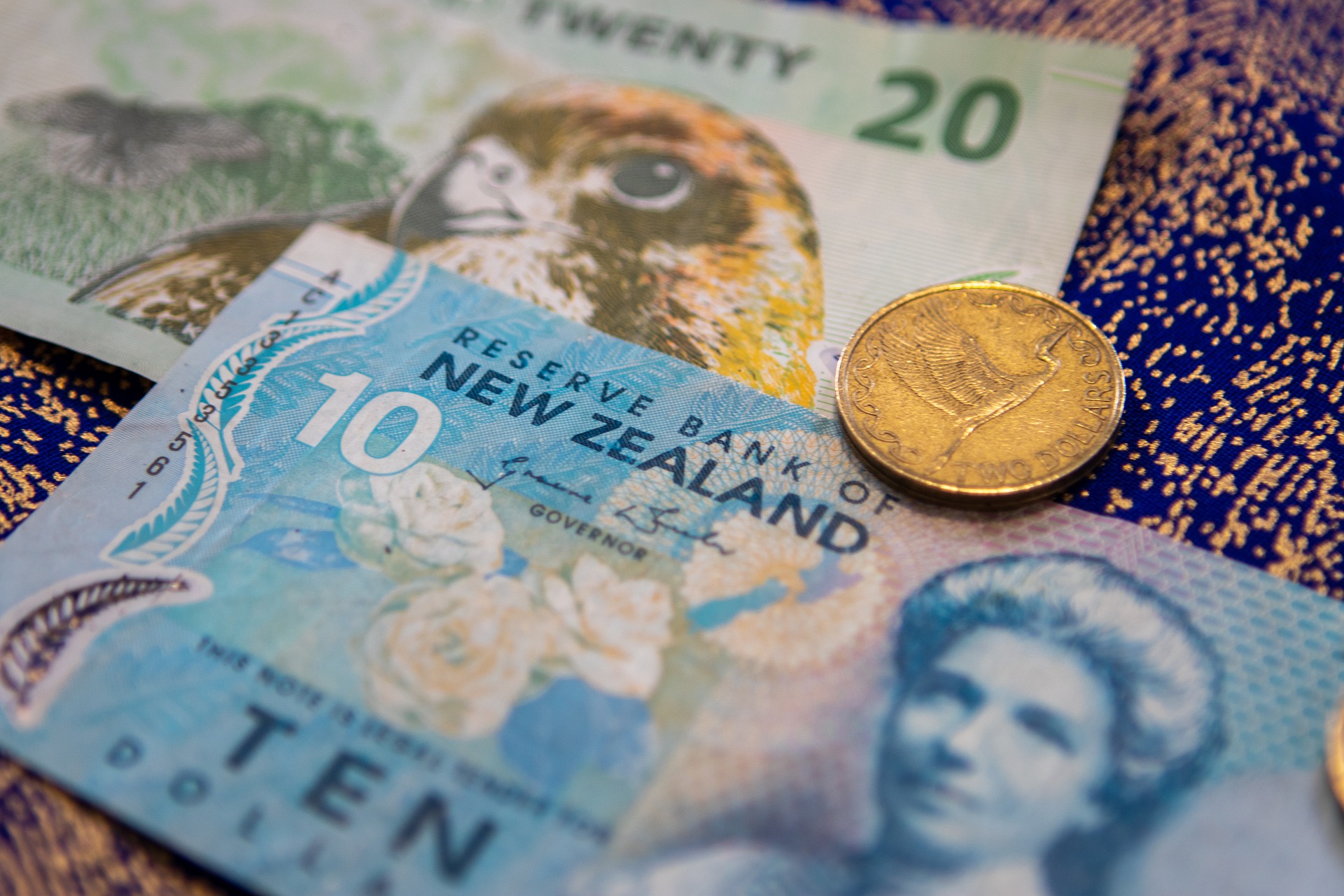NZ Dollar to US Dollar slides for the fifth consecutive day to 0.6170, as the RBNZ hikes rates by 50 bps to 3% to tackle high inflation and economic weakness.

NZ Dollar to US Dollar Weakens to 0.6170 with Interest Rates at 3%
NZ Dollar to US Dollar saw a single-week fall of 3.4% last week and closed at 0.6170 on Friday, August 19, 2022. The RBNZ hiked rates to 3%, with a 50 bps rate hike.
The NZD/USD currency pair has moved lower to 0.6170. The New Zealand Dollar slipped from 0.6450 to 0.6170 in five days. It is the fifth straight day of weakness, and the New Zealand Dollar is at monthly lows, at levels last seen on July 19. The NZD/USD fell almost 300 pips last week.
The New Zealand Dollar to US Dollar is below the 100 DMA at 0.6403. CPI inflation is at 7.3% year-on-year in Q2 2022, rising to a 32-year high. Analysts expect inflation to ease by the third quarter. More tightening in rates by the central banks can be expected in the next meeting in October.
The Reserve Bank of New Zealand hiked the official rate to 3% on Wednesday. The central bank has hiked rates, the highest since 2015, to curb high inflation. The RBNZ met expectations by hiking rates by 50 bps. It is the seventh hike in rates. In April, May, and June, the central bank hiked rates by half a percent.
The RBNZ may hike rates to 4% by next year, predict analysts. The central bank has set a target to tame inflation within the 1% to 3% mark, causing a downslide in the NZ Dollar to US Dollar.
The Bank of Japan has not lifted rates at -0.1% though the inflation rate is high. Interest rates in Britain are at 1.75%. Inflation is at a 14-year high in Switzerland, and rates are at -0.75%, the lowest rate among global countries. Interest rates in Canada are at 2.5%.
Covid Restrictions Lifted in New Zealand
The New Zealand economy is recovering after Covid restrictions were completely lifted on July 31, 2022. New Zealand has reopened its borders to air and sea transport. It is the first time that the country has opened its borders since the pandemic started in March 2020.
International tourists can now visit New Zealand. Tourists from across the world are visiting the country after the removal of border restrictions. The number of deaths caused by the Covid pandemic is the lowest in New Zealand. The government has controlled Covid infections through strict travel restrictions and isolation measures.
The tourist sector has improved with international travel, especially among students from many countries seeking education in New Zealand. Improvement in the travel sector adds strength to the weakening New Zealand Dollar currency.
The housing sector in New Zealand has slowed down, as high inflation affects purchases of houses. The unemployment rate is high, and people are desperate for a regular income to buy essential commodities. However, consumer spending is supporting the NZ Dollar to US Dollar.
The economy has a large current account deficit caused by covid restrictions. The United States and China are two of the largest trading partners of New Zealand, and the weakness prevailing in these countries affects the domestic economy this year.
The commodity-driven New Zealand Dollar may gain support at the 0.61 levels as fuel prices have eased in the global oil market.
Australian Dollars to US Dollars Weakens along with New Zealand Dollar
The Reserve Bank of Australia has hiked rates to 1.85%. The RBA signals that it may hike rates further in the coming months.
The NZ Dollar to Australian Dollar is at 0.8983. The AUD/USD lost 85 pips on Friday with the central bank hiking rates to curb inflation in Australia, similar to the approach taken by the RBNZ.
The Chinese economic data softened with the severity of the Covid restrictions. New Zealand and Australia have strong trade relations with China, and the weakness in the Chinese economy reflects in the Kiwi Dollar and the Australian Dollar exchange rate.
Pound to New Zealand Dollar
The British Pound to New Zealand Dollar fell to a multi-month low of 1.9156. At the start of the week, the GBP/NZD fell to 1.8800 but recovered by Friday, August 19, 2022.
US Dollar Gains Strength
The US Dollar closed at 108.017 on Friday, August 20, 2022, at a one-month high. The greenback saw the highest weekly surge last week, just as the New Zealand Dollar Index slipped last week.
The strong US Dollar is the cause for the weakness in the New Zealand Dollar. The aggressive policy tightening by the US Federal Reserve adds to the weakness woes of the New Zealand Dollar.
Recession fears are driving currencies lower across the globe. It is the cause for the US Dollar to rally higher to 108.098 on Friday, August 19, 2022.